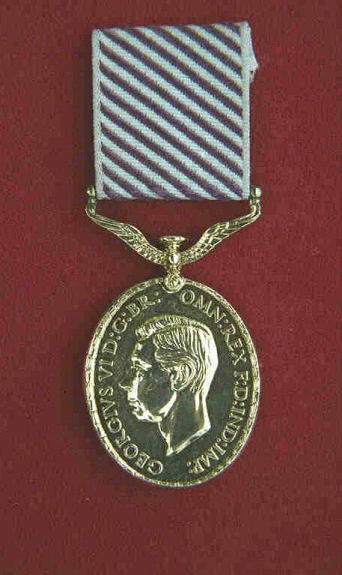Context
The DFM was instituted on 03 June 1918.
Eligibility and Criteria
The award was made to Non-commissioned Officers and non-commissioned members for an act or acts of valour, courage or devotion to duty performed whilst flying in active operations against the enemy.
Description
An oval, silver medal, 1.375 inches wide..
Medal obverse:
King George V: A bareheaded coinage effigy, facing left, and the legend: GEORGIVS V BRITT: OMN: REX ET IND: IMP:
King George VI: A bareheaded coinage effigy, facing left, and the legend: GEORGIVS VID: G: BR: OMN: REX F. D: IND: IMP:
On the reverse, within a wreath of laurel, Athena Nike is shown seated on an aeroplane, a hawk rising from her right arm above the words FOR COURAGE. The year of the award was engraved on the back of the bar.
For mounting, a bomb is attached to the clasp and ribbon by two wings.
The ribbon is 1.25 inches wide, and consists of alternate violet and white stripes ( leaning 45 degrees to the left. A violet stripe is to appear in the bottom left and upper right corners when viewed on the wearer's chest. Until 1919, the stripes were horizontal.
Bars
A straight slip-on silver bar with an eagle in the centre was awarded for a further act that would have warranted the medal. None was given to a Canadian.
Historical Notes
- The medal was engraved with the service number, rank, initials, surname and service. During WWI the medal was impressed.
- The DFM was instituted on 03 June 1918.
- A total of 556 DFMs awarded to Canadians, plus 136 to RAF/ RNZAF/RAAF personnel serving in RCAF squadrons.
